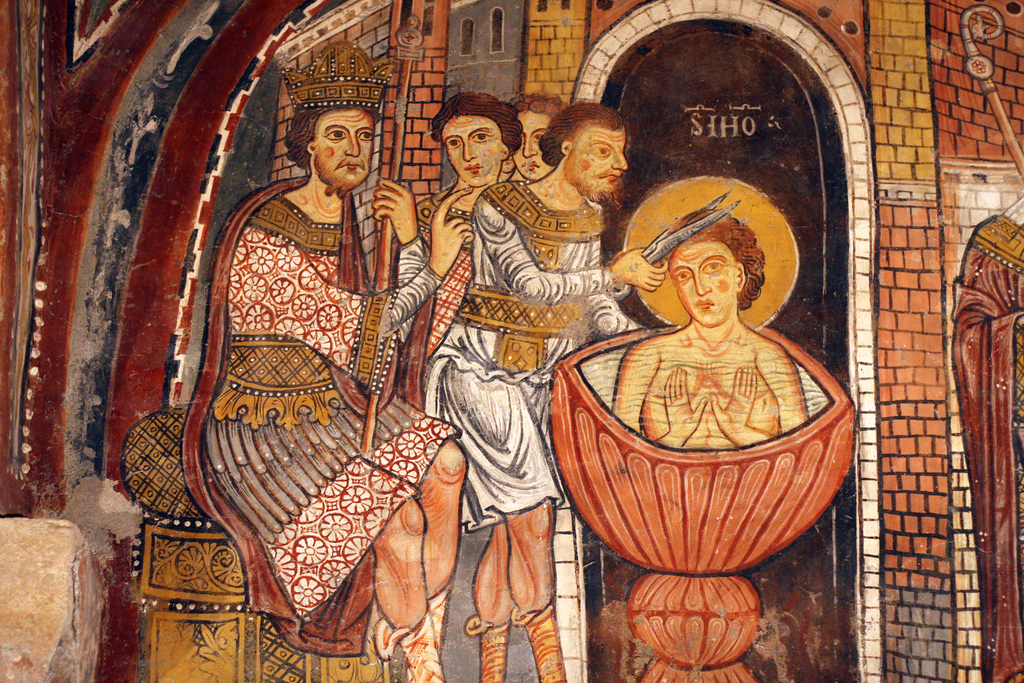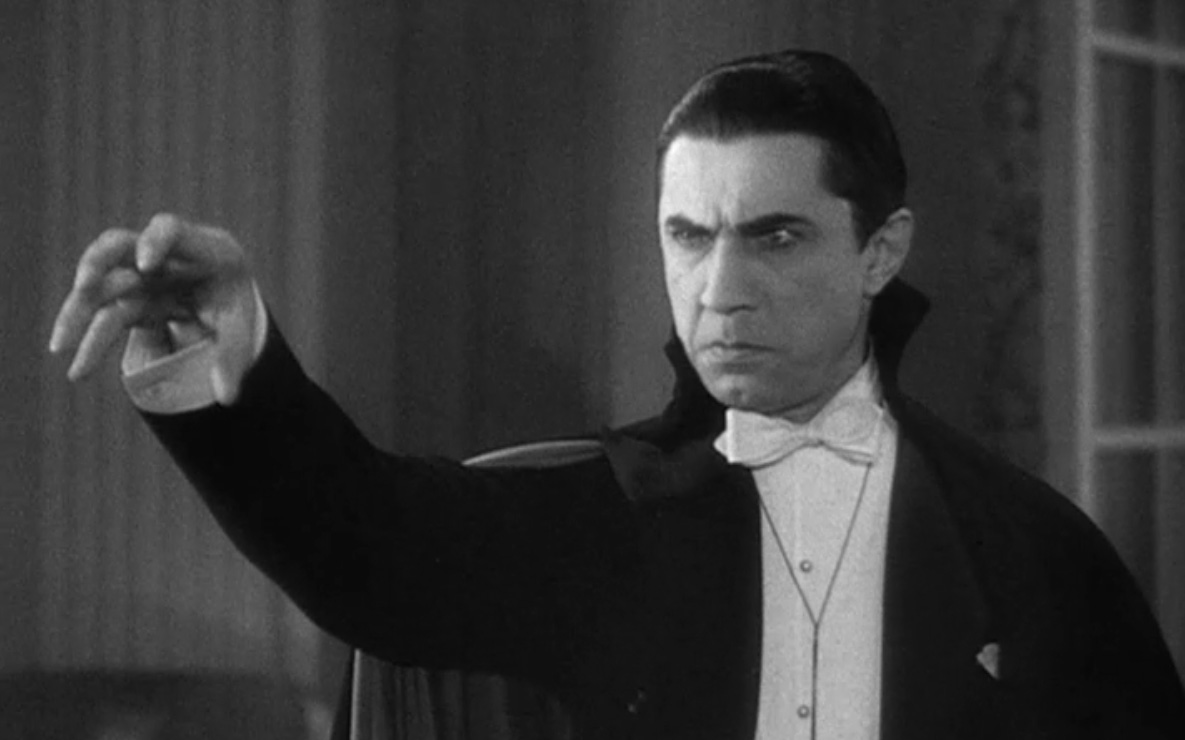
Persecution of St. John the Evangelist by the Emperor Domitian. As described in the Golden Legend, soldiers shave his head and put him in a pot of boiling oil, but he remains unharmed and free of pain. In the background is a representation of the Porta Latina in Rome, where the event was said to take place. Detail of fresco in the Crypt of St. Magnus (1237), Cattedrale di Santa Maria, Anagni, Lazio, Italy.
Domitian (born 24 October AD 51 – died 18 September AD 96) was Roman emperor from 81 to 96. He was the younger brother of Titus and son of Vespasian, his two predecessors on the throne, and the last member of the Flavian dynasty. During his reign, his authoritarian rule put him at sharp odds with the senate, whose powers he drastically curtailed. Domitian’s reign came to an end in 96 when he was assassinated by court officials. After his death, Domitian’s memory was condemned to oblivion by the Roman Senate, while senatorial authors such as Tacitus, Pliny the Younger, and Suetonius propagated the view of Domitian as a cruel and paranoid tyrant. As emperor, he oversaw one of the cruelest periods of persecution of Christians.
Domitian’s body was carried away on a common bier and unceremoniously cremated by his nurse Phyllis. It is difficult to burn a body; it would have been extremely difficult for one person to cremate a corpse without being noticed, so perhaps the nurse was simply the ringleader of a small group intent on burning the imperial remains. Nero, also murdered because he was unable to bring himself to commit suicide at the last moment, was refused burial and was said to have been cremated by his nurses as well. Burial was refused to Nero and Domitian because the Romans thought unburied corpses prevented the spirit’s entering into eternal rest. Cremation was an older, more honorable way to set the spirit at rest. But in the case of Nero and Domitian, the underworld refused to take them in and their spirits passed into flocks of birds instead. Flocks of crows, starlings, and ravens that still circle around the Piazza del Popolo in Rome, the place where they were clandestinely cremated, are said to contain the restless spirits of the emperors. (The church of Santa Maria del Popolo was built there in the piazza in 1099 in an effort to exorcize the imperial ghosts.)
Great undulating clouds of birds that dip and swirl over the Tiber can seem to take the shape of human bodies or a human arm and hand reaching out toward the people below. It is easy to see how the clouds of smoke ascending from a cremation could be thought to lodge in the flock of birds and then posses the flock.

